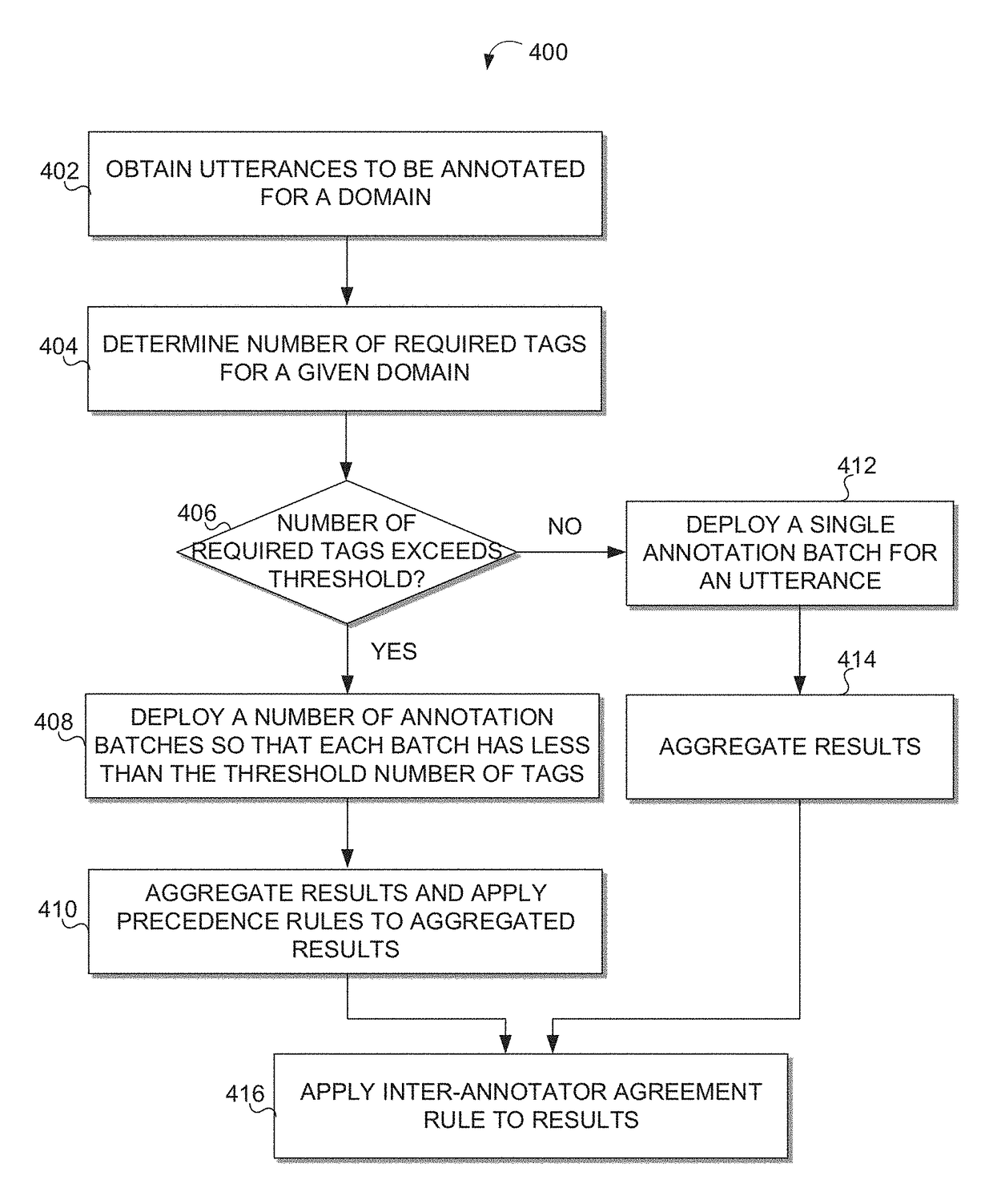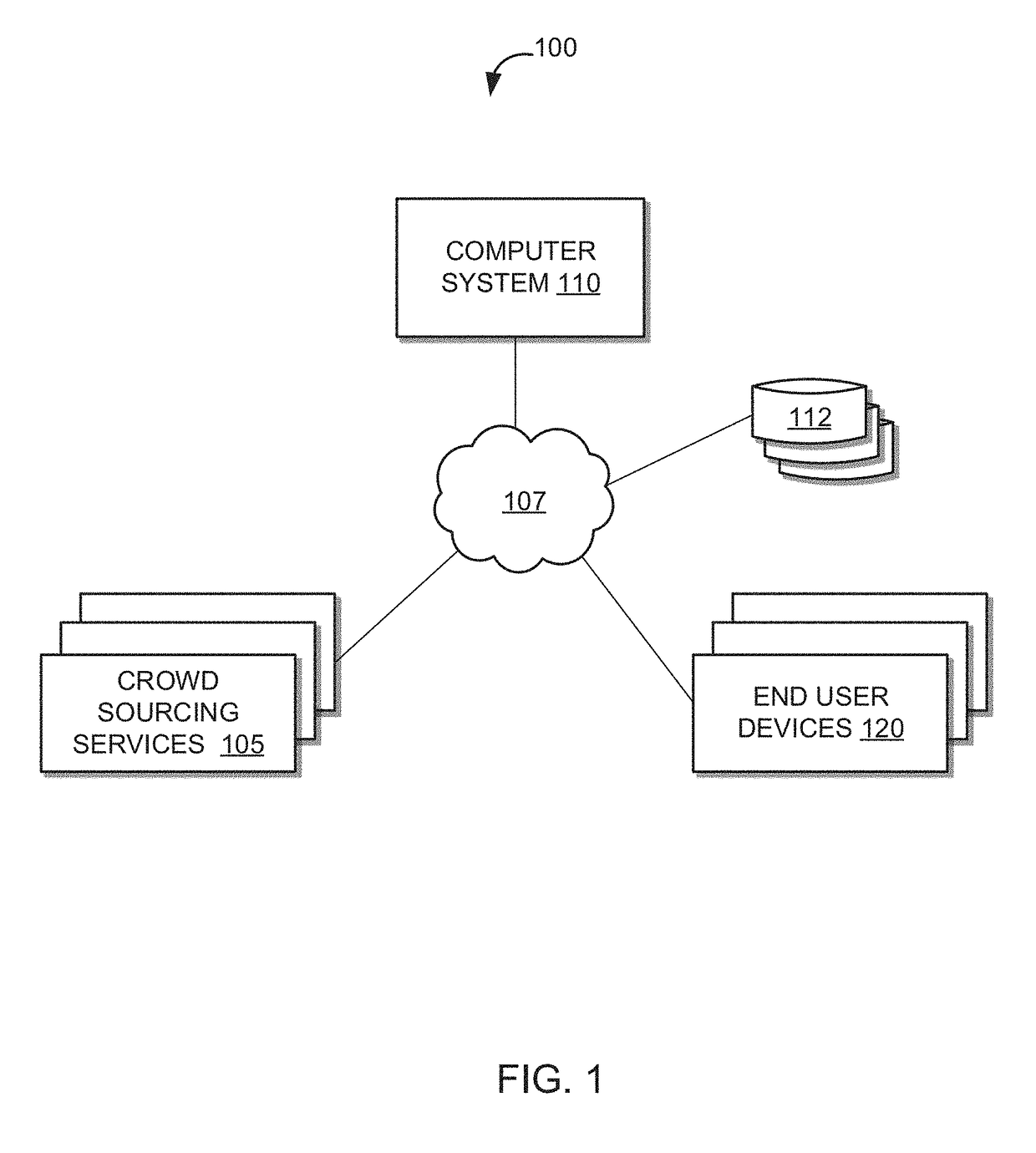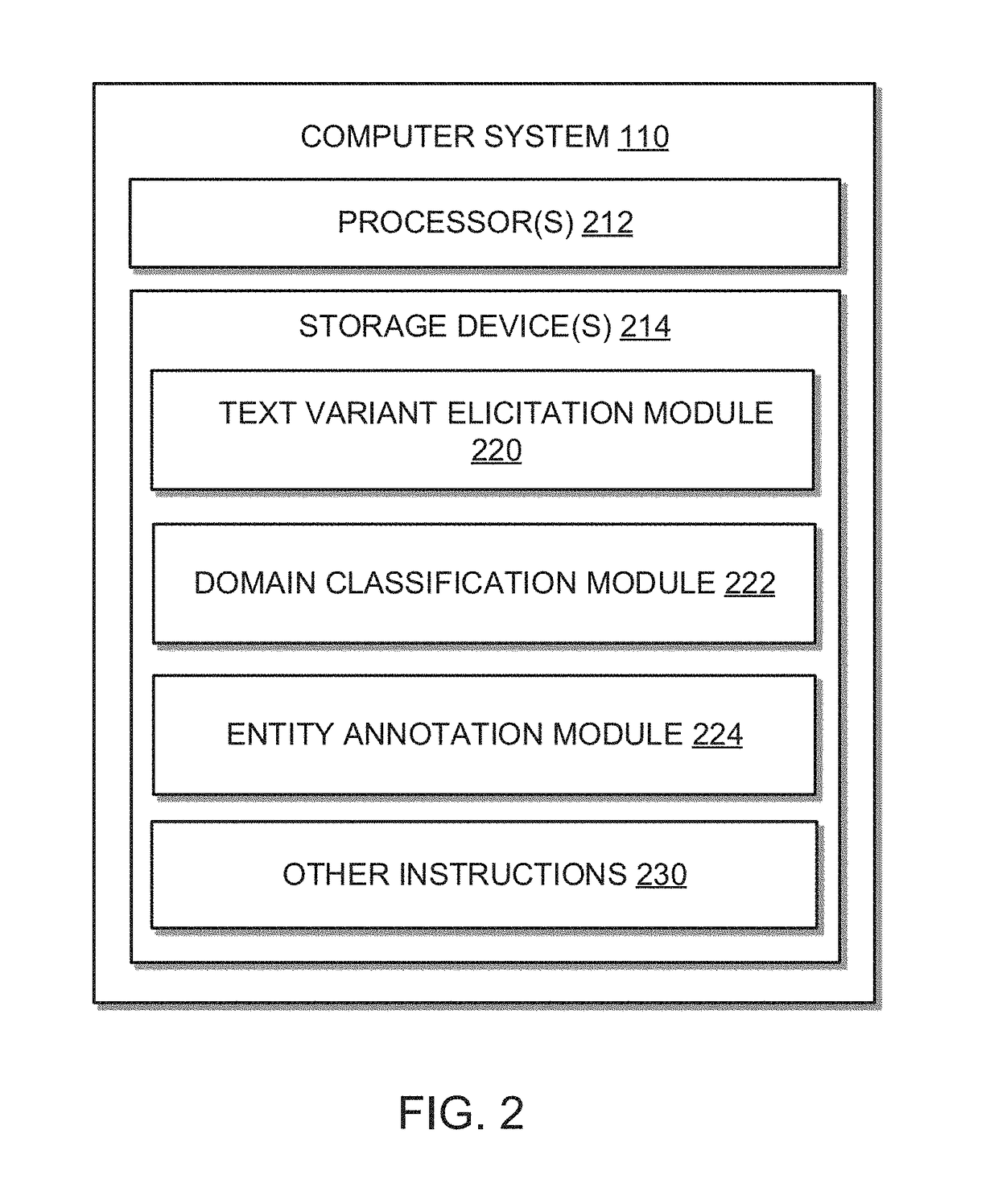System and method of annotating utterances based on tags assigned by unmanaged crowds
a crowd-based, system-based technology, applied in semantic analysis, instruments, computing, etc., can solve the problems of crowd-based user overwhelmed at the number of entities, domain limitation may be necessary, etc., to reduce cognitive load, reduce cognitive load, and improve quality
- Summary
- Abstract
- Description
- Claims
- Application Information
AI Technical Summary
Benefits of technology
Problems solved by technology
Method used
Image
Examples
Embodiment Construction
[0023]The invention addressing these and other drawbacks relates to a system and method for tagging utterances with NER labels using unmanaged crowds. Tagging entities through unmanaged crowds is described herein for illustration. However, the systems and methods may be used to perform full semantic annotation of natural language utterances through unmanaged crowds using the various operations and programmed devices described herein.
[0024]As used herein, the term “tagging” (and similar terms such as “tag”) will be used interchangeably with the term “annotating” (and similar terms such as “annotate”). Users among the unmanaged crowd are tasked to perform an annotation job, which entails analyzing utterances (e.g., “watch Jurassic Park on channel 53”) associated with a domain (e.g, a “Movies” domain), and annotating entities (e.g., a “Channel” entity and a “Program” entity) associated with the domain.
[0025]A domain is a grouping of information that relates to other information within ...
PUM
 Login to View More
Login to View More Abstract
Description
Claims
Application Information
 Login to View More
Login to View More - R&D
- Intellectual Property
- Life Sciences
- Materials
- Tech Scout
- Unparalleled Data Quality
- Higher Quality Content
- 60% Fewer Hallucinations
Browse by: Latest US Patents, China's latest patents, Technical Efficacy Thesaurus, Application Domain, Technology Topic, Popular Technical Reports.
© 2025 PatSnap. All rights reserved.Legal|Privacy policy|Modern Slavery Act Transparency Statement|Sitemap|About US| Contact US: help@patsnap.com



